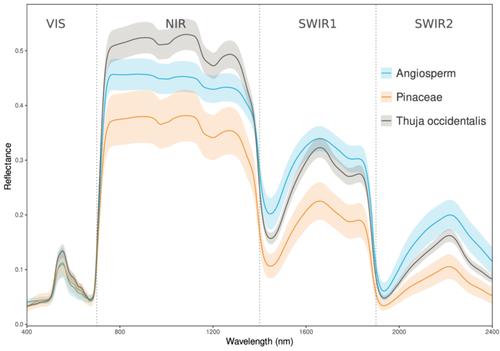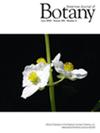Foliar spectra accurately distinguish most temperate tree species and show strong phylogenetic signal
Abstract
Premise
Spectroscopy is a powerful remote sensing tool for monitoring plant biodiversity over broad geographic areas. Increasing evidence suggests that foliar spectral reflectance can be used to identify trees at the species level. However, most studies have focused on only a limited number of species at a time, and few studies have explored the underlying phylogenetic structure of leaf spectra. Accurate species identifications are important for reliable estimations of biodiversity from spectral data.
Methods
Using over 3500 leaf-level spectral measurements, we evaluated whether foliar reflectance spectra (400–2400 nm) can accurately differentiate most tree species from a regional species pool in eastern North America. We explored relationships between spectral, phylogenetic, and leaf functional trait variation as well as their influence on species classification using a hurdle regression model.
Results
Spectral reflectance accurately differentiated tree species (κ = 0.736, ±0.005). Foliar spectra showed strong phylogenetic signal, and classification errors from foliar spectra, although present at higher taxonomic levels, were found predominantly between closely related species, often of the same genus. In addition, we find functional and phylogenetic distance broadly control the occurrence and frequency of spectral classification mistakes among species.
Conclusions
Our results further support the link between leaf spectral diversity, taxonomic hierarchy, and phylogenetic and functional diversity, and highlight the potential of spectroscopy to remotely sense plant biodiversity and vegetation response to global change.


 求助内容:
求助内容: 应助结果提醒方式:
应助结果提醒方式:


